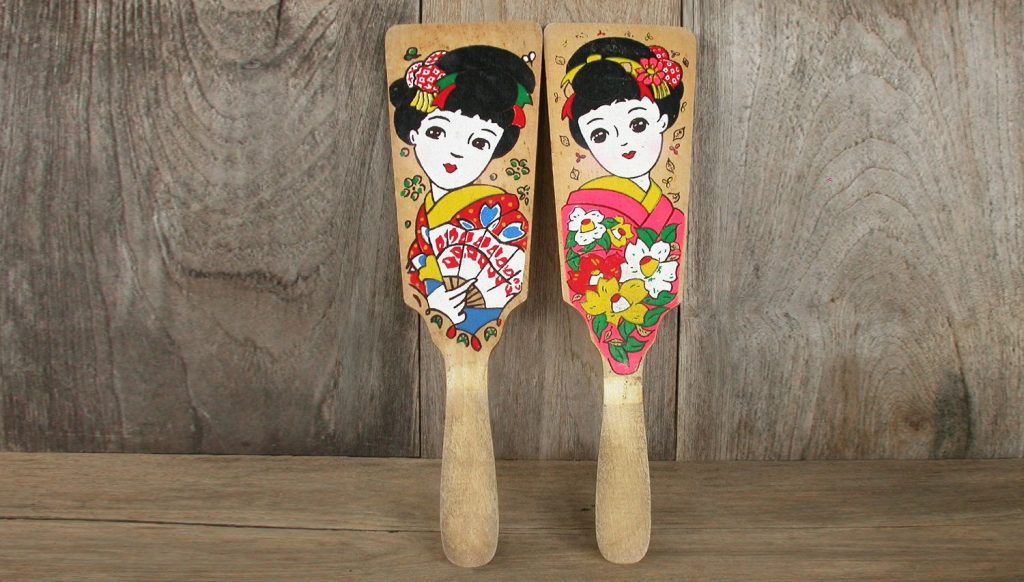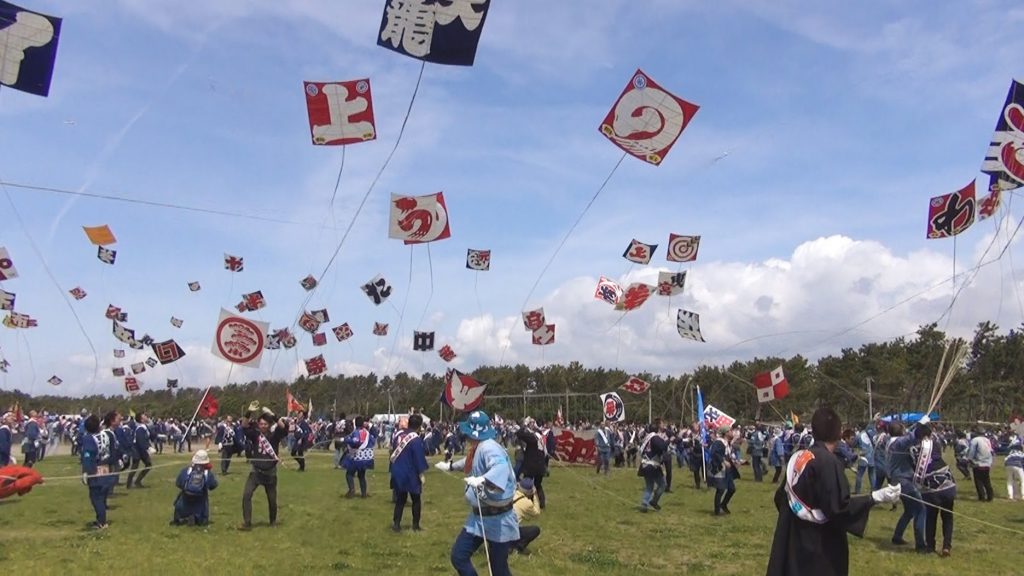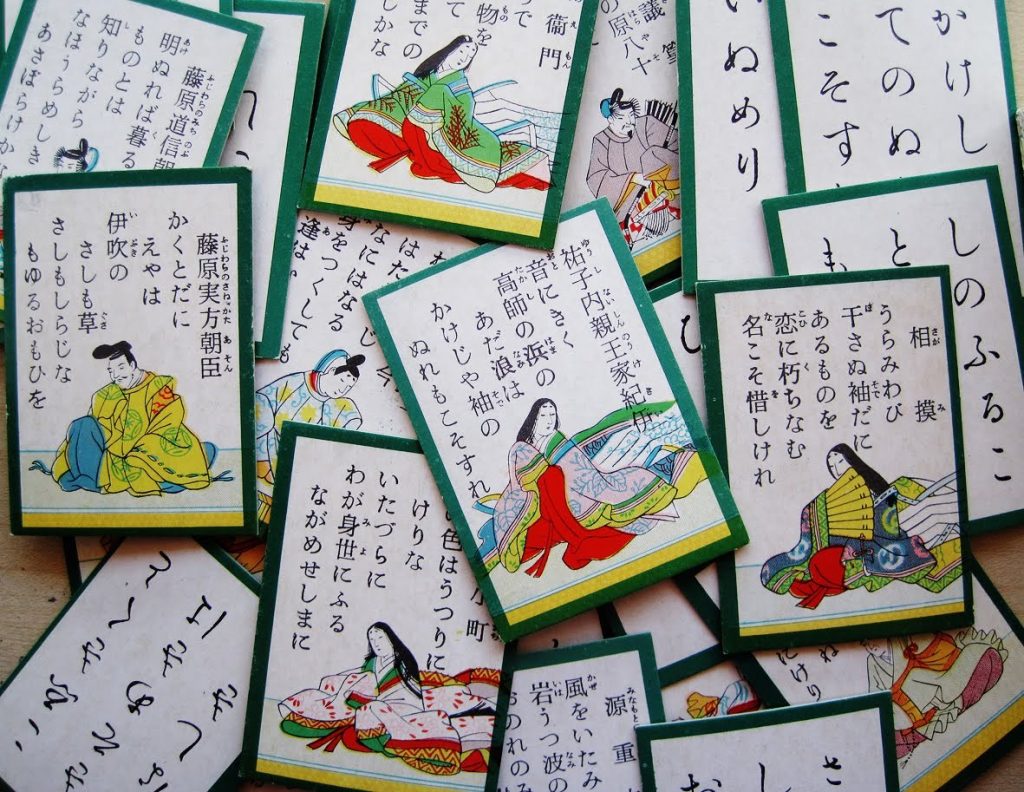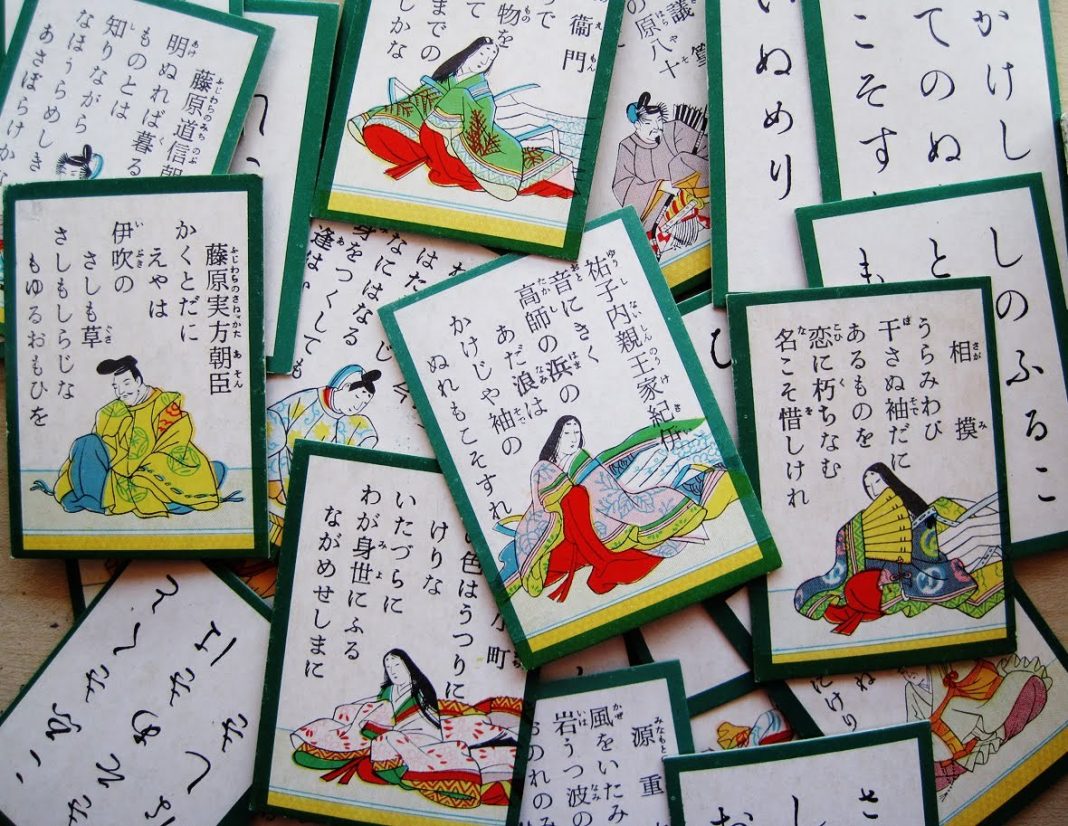Hagoita
Hagoita are small decorative wooden paddles that act as good luck charms for the New Year. The original wooden paddles that these charms are based on are from a Japanese game called hanetsuki. In this badminton-type game, players strike bad luck away with the paddles.
Modern hagoita are often adorned with 3-dimensional artwork made of silk, washi paper, or wood. The art usually resembles Japanese geisha, kabuki actors, or sumo wrestlers. Some very special hagoita will also be embellished with gold leaf.
If a man is displayed on the face of a hagoita, the charm is generally geared towards helping with economic recession. If a woman is displayed, the charm is usually for fertility or a new-born baby.

Takoage
Takoage is a kite flying game played during New Years in Japan. These kites can come in diamond, rectangular, and hexagonal shapes, or sometimes they can be in the shape of Japanese characters or various animals! Often the designs painted on the kites signify good luck. The kite flying New Years tradition is so prevalent in Japan because the Tokugawa shogun during the late Edo period restricted the flying of kites except during the New Year’s period.

Karuta
The final traditional Japanese New Year game is karuta – a card game. One player reads out a poem or well known proverb, and the player who correctly identifies the card with the corresponding picture or character the fastest, gains a point.
The oldest version of this game in Japan is called Hyakunin Isshu karuta, which translates to one hundred poets. This well-known collection is comprised of 100 poems, each only 5 lines and 31 syllables. Elementary and junior high schools usually teach the Hyakunin Isshu to students, so most Japanese people are familiar with these poems!

According to hisgo.com















